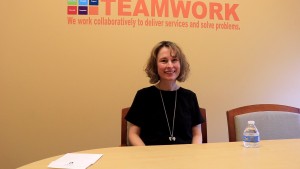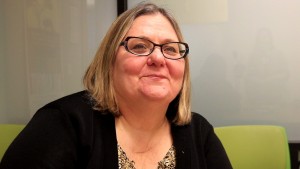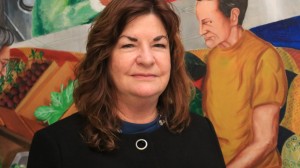San Jose’s Happy Hollow Park & Zoo opened its doors an hour early to seniors for the Senior Safari Walkabout on the fourth Thursday of each month from May to October this year. The free event sponsored by the Health Trust was just one of many activities encouraging seniors in Santa Clara County to exercise.
Santa Clara, along with San Mateo County, is seeking to have its cities designated as age-friendly by the World Health Organization (WHO). Over the next three to five years, both counties are planning to implement projects and programs responsive to the needs of their older residents.
Although WHO does not provide funding to designated cities and communities, the designations can still provide support to cities’ project proposals. Cities also join the WHO Global Network for Age-friendly Cities and Communities, a platform for sharing age-friendly practices and programs. More than 530 cities and communities in 37 countries are members of the Network. In the United States, 158 cities and communities are members, 18 of which are in the Bay Area.
Engaging the aging population in the Bay Area

Santa Clara estimates that by 2030, one in four of its residents will be over 60. Heather Cleary, executive director of Peninsula Family Service in San Mateo County, said that one in five of the residents in San Mateo County is over 60. However, aging is influenced by other factors, according to Dr. Anabel Pelham, professor of gerontology at San Francisco State University and founding director of the Center for Age-Friendly Excellence.
One could be 85-years old and still be very active in the community, or 60-years old and struggling because of discrimination and poverty. The Bay Area’s ethnic diversity also factors in the complexity of the older adult population. However it is also this diversity that makes older adults important community resources.
“[Older adults] have a very active and engaged life and have the opportunity to mentor many of us as we age ourselves. They have so much great experience to share with us,” said Cleary.
Since high school, Susan Weisberg, a 72-year-old Palo Alto resident, has been active in the community by volunteering for various organizations. “All the literature says that you’ll live better, you’ll live longer, if you’re other-directed,” said Weisberg. “I think that’s what drives people to volunteer because they want a sense of belonging and community and activity level.”
Making every zip code age-friendly in Santa Clara
Santa Clara’s goal in 2015 was to get all its cities designated age-friendly by July 2017. As of December 6, 2017, the county is waiting to hear back regarding the applications submitted by the last four cities last July, according to Diana Miller, Seniors’ Agenda project director for the Department of Aging and Adult Services in Santa Clara. She hopes the official designations will come by the year-end.

Morgan Hill, one of the first cities in the county to be designated, is improving communication efforts to reach older adults. The city’s local newspaper now sports a new column dedicated to age-friendly issues, and has formed an outreach committee for isolated seniors. The city is also providing alternative transportation through a pilot volunteer driver program, which serves five regular riders, three of which are in their 90s, said Debbie Vasquez, the city’s Older Adult Services Supervisor.
Better transportation is also a pressing need for seniors in the Bay Area. The county had launched a pilot transportation service for older adults in Campbell, Cupertino, Los Gatos, Monte Sereno and Saratoga.
“We’re so grateful for these programs that will take us to all the places we need to go,” said Norene LeMieux, a 78-year-old Campbell resident who uses this service. “Otherwise you’d have a very, very lonely life.”
San Jose, the largest city in the county, was designated after Morgan Hill. Mary O’Meara, the city’s Recreation Supervisor, said they are planning a forum on ageism, or discrimination against older adults, in the business community next spring. The city has established an Age-Friendly Advisory Council, a subset of which is a task force on mature worker opportunities. They will also create a digital skills program to provide additional computer training and increase internet access to older adults.
San Mateo to start with their age-friendly process

A successful Age-Friendly Cities Summit on November 9 kicked off San Mateo’s quest for age-friendly designations. About 150 attended the summit, which sparked conversations on how the cities could start the process. “The enthusiasm in the room was amazing,” said Susan Houston, director of Older Adult Services of the Peninsula Family Service.
Summit participants expressed qualms regarding the cost of making a city age-friendly. But Houston explained it could be as simple as “going around and marking which light bulbs were out in the city.”
Cleary acknowledged the need to consider funding in the applications. “Resource allocation is always a challenge,” she also said. “We need…to continue the dialogue, to make sure city council members and county supervisors understand the importance of becoming age-friendly and allocate the resources to the process.”
WHO’s framework for age-friendly cities
According to Cleary, the whole community can benefit from age-friendly cities. For example, cities may repair cracks in the sidewalks with older adults in mind. However, she explained, “Improving sidewalks helps all members of our community, from young children to moms with strollers to other individuals who might not have their full abilities.”
In 2005, WHO started working towards developing a framework for making cities and communities more age-friendly. The organization identified eight domains on which cities and communities could focus their efforts: built environment, transport, housing, social participation, respect and social inclusion, civic participation and employment, communication, and community support and health services.
To be designated, the city or community must first express intent in becoming age-friendly and provide letters of commitment from local government officials. Both Santa Clara and San Mateo have involved seniors in the application process. As a part of the age-friendly committees, older adults can help identify needs to be addressed. They can also help write up and present the report to city council, according to Houston. She explained, “They will be part of working together to make the changes, to fill the gaps within the community.”
